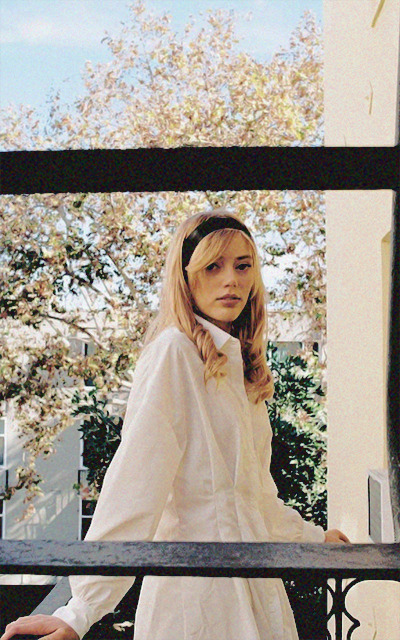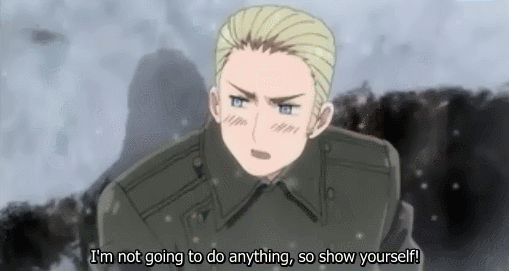#Franco-Swiss
Text


Faceclaim: Grace Van Dien
Age: 25 ans
Année de naissance: 1996
Origines: néerlandaise, anglaise, suisse-française, suisse-allemande, irlandaise, écossaise, suédoise, finlandaise, française, polonaise et danoise
#fc: grace van dien#female#90's#caucasian#dutch#english#Franco-Swiss#finnish#polish#french#irish#sueden#scottish#danish#blond#brown#actress
11 notes
·
View notes
Text

The Wind, Félix Vallotton, 1910
#art#art history#Félix Vallotton#landscape#landscape painting#landscape art#Les Nabis#French art#Franco-Swiss art#20th century art#oil on canvas#National Gallery of Art
1K notes
·
View notes
Text

Gorges of the Doubs river on the Franco-Swiss border, Franche-Comté region of France
French vintage postcard, mailed in 1920
#vintage#franche-comté#tarjeta#france#gorges#briefkaart#river#border#doubs#franche#postcard#photography#region#postal#carte postale#sepia#ephemera#swiss#historic#1920#french#ansichtskarte#comt#postkarte#gorges of the doubs river#franco#postkaart#mailed#photo
4 notes
·
View notes
Text










“‘Come out, English soldier; come out here to us.’ For some little time we were cautious, and did not even answer. Officers, fearing treachery, ordered the men to be silent. But up and down our line one heard the men answering that Christmas greeting from the enemy. How could we resist wishing each other Merry Christmas, even though we might be at each other’s throats immediately afterwards? So we kept up a running conversation with the Germans, all the while our hands ready on our rifles. Blood and peace, enmity and fraternity - war’s most amazing paradox. The night wore on to dawn - a night made easier by songs from the German trenches, the pipings of piccolos and from our broad lines laughter and Christmas carols. Not a shot was fired."
-Peace on the Western Front: Goodwill in No-man's Land - The Story of the World War I Christmas Truce
{Smithsonian Magazine}
Hetalia ~ Episode 100
~ Japanese Version
+ Germany & England
Gifs by @aph-japan
{Do Not Repost or Reproduce without my Permission}
{Do Not Remove Caption}
{DO NOT Use my Posts for overly negative commentary}
[Positive or Respectful is OK!]
(Please ASK to Use)
During the first eight weeks of World War I, French and British troops stopped the German attack through Belgium into France outside Paris at the First Battle of the Marne in early September 1914. The Germans fell back to the Aisne valley, where they dug in. In the First Battle of the Aisne, the Franco–British attacks were repulsed and both sides began digging trenches to economise on manpower and use the surplus to outflank, to the north, their opponents. In the Race to the Sea, the two sides made reciprocal outflanking manoeuvres and after several weeks, during which the British forces were withdrawn from the Aisne and sent north to Flanders, both sides ran out of room. By November, armies had built continuous lines of trenches running from the North Sea to the Swiss frontier.
The Christmas truce (German: Weihnachtsfrieden; French: Trêve de Noël; Dutch: Kerstbestand) was a series of widespread unofficial ceasefires along the Western Front of the First World War around Christmas 1914.
The truce occurred five months after hostilities had begun. Lulls occurred in the fighting as armies ran out of men and munitions and commanders reconsidered their strategies following the stalemate of the Race to the Sea and the indecisive result of the First Battle of Ypres. In the week leading up to 25 December, French, German and British soldiers crossed trenches to exchange seasonal greetings and talk. In some areas, men from both sides ventured into no man's land on Christmas Eve and Christmas Day to mingle and exchange food and souvenirs. There were joint burial ceremonies and prisoner swaps, while several meetings ended in carolling. Men played games of football with one another, creating one of the most memorable images of the truce. Hostilities continued in some sectors, while in others the sides settled on little more than arrangements to recover bodies.
The following year, a few units arranged ceasefires but the truces were not nearly as widespread as in 1914; this was, in part, due to strongly worded orders from commanders, prohibiting truces. Soldiers were no longer amenable to truce by 1916; the war had become increasingly bitter after the human losses suffered during the battles of 1915.
The truces were not unique to the Christmas period and reflected a mood of "live and let live", where infantry close together would stop fighting and fraternise, engaging in conversation. In some sectors, there were occasional ceasefires to allow soldiers to go between the lines and recover wounded or dead comrades; in others, there was a tacit agreement not to shoot while men rested, exercised or worked in view of the enemy. The Christmas truces were particularly significant due to the number of men involved and the level of their participation—even in quiet sectors, dozens of men openly congregating in daylight was remarkable—and are often seen as a symbolic moment of peace and humanity amidst one of the most violent conflicts in human history.
-from Wikipedia's article; "Christmas truce"
"Having a gunfight on {a Holy night/timeframe} wouldn't be right."
-Germany
Say what you will about "Hetalia", but this sequence was semi-based on real historical events -
Real events that should be much more well known.
#historical hetalia#hetalia#aph england#aph germany#arthur kirkland#ludwig beilschmidt#gereng#hws germany#hws england#geruk#hetalia: the world series#hetalia world series#hetalia world series: season 2#hetalia: season 4#the christmas truce#hetalia: jpn version#chai hetalia#chai gifs#chai hetalia gifs#chai germany#chai england#hetalia: original version#(I was Thinking About This Sequence Again {and I Am Hoping Beyond Hope Right Now for Things} as I post this but Yes)#(Its one of the ones I actually really didnt mind at all Considering the Content it Actually Got Half Right)#(This is stuff like what this series Concept Could have Done More when Handled Right)#(There is another popular post around with the scene but it's US dub version and I dont really want to further promote for Reasons)#(So Im choosing to specifically take from the original version to show what the original text also was)#(The link to the original quotes article since died but I can provide it in comments later and extra context is from Wiki which has a whole#(Page on It and its History YOU SHOULD Know REGARDLESS of the Context you Learn it from)#(I havent made edits for the fan base in ages PLEASE Dont Make Me Regret The Decision and I will be carefully watching comments on post)
57 notes
·
View notes
Text





Geneva ‘73 - 50 Years on Sbarro Tiger, 1973. The Tiger started life in 1968 as Bertone's Panther concept that was intended as Group 6 race car for the Scuderia Brescia Corse team powered by a BRM V12 engine. However the project founded and the concept was sold to Swiss coachbuilder, Franco Sbarro. Sbarro saw potential for the Bertone prototype to become an exotic road car for his wealthy cliental. The 1968 car was modified, loosing it's massive wing and gaining a 6.3 litre Mercedes V8. Nuccio Bertone, was surprised to see "his" car on Sbarro's stand at the Show, however a discussion between the two men allowed Sbarro to prove his good faith. Alas the Swiss coachbuilder's plan to make a limited number of Tigers never came to pass and the car is in the hands of a collector who is restoring it back to Bertone's original 1968 Panther version
#Sbarro#Sbarro Tiger#prototype#concept#Bertone#1973#Geneva 73#Geneva Motor Show#50 years on#Bertone Panther#Mercedes V8#dead brands
156 notes
·
View notes
Text

Veruschka and a St. Bernard photographed by Franco Rubartelli in the Swiss Alps for French Vogue, Dec 1968/Jan 1969.
61 notes
·
View notes
Text
Hello! Welcome to the Ultimate Showdown of Ultimate Papa Louie!!
My name is Miles (@sunsetcorvid ) and I am here to offer a tournament of the best Papa Louie character!!!
There are 204 characters in my google doc. A majority of which have flipdeck cards. This post may update before the tournament date with more characters without flipdeck cards. I will randomize pairs and put them against one another. All characters range from each Papa Louie game, and I mean each one.
Only one will remain.
There will not be a bracket, as there are many characters and it stresses me out trying to make something as big as that. So, it will be a surprise on which ones are paired up.
I made this for fun and I hope yall have fun, too!!
We will begin May 15th.
Below are the list of characters.
Wally
Jojo
Kingsley
Pizza Monsters
Quinn
Timm
Sarge
Sarge Fan
Little Edoardo
Papa Louie
Roy
Captain Cori
Gino Romano
Big Pauly
Party Subs
Greg
Marty
Hank
Nick
Rico
Foodini
Yippy
The Onion Ring
Kahuna
Doan
Olga
The Tomatoes
Georgito
Mindy
Boomer
Penny
Bruna Romano
Akari
Pinch Hitwell
Carlo Romano
Johnny
Clover
Hugo
Allan
James
Zoe
Mitch
Connor
Utah
Robby
Rita
Radley Madish
Shannon
Kenji
Wendy
Dill Weeds
Tony Solary
Matt Neff
Prudence
Alberto
Burgerzilla
Peggy
Taylor
Cheddar Macks
Santa
Sliders
Professor Fitz
Scarlett
Awesome Saucer
Edna
Bacoburn
Vicky
Pepper Jack
Maggie
Cooper
Willow
Mandi
Radishes
Chuck
Cheese Wheel
Scooter
Lettuce Lark
Radlynn
Blue Shroom
Cletus
Dill Worms
Ninjoy
Crystal
Jellybacks
Gremmie
Swiss Zack
Lisa
Brussel Larks
Deano
Dill Wheels
Ivy
Luau LePunch
Mary
Sundaesaurus
Mayor Mallow
Thorn Shroom
Nevada
Rocky Road
Bertha
Gummeel
Hacky Zak
Cooladas
Sue
Mallow Men
Kayla
Powseekers
Iggy
Kaiser Onion
Tohru
Cherry Bombs
Rudy
Xandra
Brownie Bop
Ember
Mr. Sherbet
Rhonda
Splashberry Derps
Franco
Sasha
Spearmint
Trishna
Julep
Disco Plumm
Chester
Cecilia
Betty Pecan
Joy
Brody
Cookie Doughmen
Sienna
Clair
Hucklebat
Austin
Skyler
Winter Onion
Whiff
Perri
Chip McMint
Duke Gotcha
Janana
Strawbuzzy
Guy Mortadello
Cherrisa
Jill Berry
Olivia
Vincent
Scuba Radish
Emmlette
Ripley
YUM n’ Ms
Xolo
Wylan B
Banana Pants
Koilee
LePete
Swizzlers
Cameo
Chocomint
Indigo
Gummy Onions
Moe
Fernanda
Coco Cooladas
Mousse
Whippa
Bow Shroom
Skip
Mangoby
The Dynamoe
Liezel
BotWursts
Mr. Bombolony
Okalani
Drakson
Evelyn
Boopsy and Bill
Kasey O
Chase
Daniela
Rollie
Sprinks the Clown
C.J. Friskins
Simone
Didar
Budwin
Treble
Yuko
Amiria
Isadora
Petrona
Pally
Kaleb
Makaila
Lloyd
Steven
Elle
Mesa
Bonnie
Kenton
Hope
Nye
Yalanda
Gabitha
Numarcus
#character tournament#papa louie#flipline studios#papa's cluckeria#papa's pastaria#papa's wingeria#papa's freezeria#papa's sushiria#papa's scooperia#papa's bakeria#papa's hot dogeria#papa's taco mia#papa's burgeria#papa's mocharia#papa's pancakeria#papa's cupcakeria#introductory post
35 notes
·
View notes
Text
The Unsettled Plain defies the conventional framings of the region’s [”Middle East”] history. The protagonists of this book are the people often left out or relegated to a minor role: pastoralists, peasants, workers, and migrants who lived in Ottoman countryside. Many books adopt national or imperial geographies, but I have used a space that destabilizes such geographies. Call it Cilicia, Çukurova, or the Adana region -- the book is about a coherent, interconnected place that is hidden on the map today.
---
During the nineteenth century, this corner of the Mediterranean at the border of Syria and Turkey contained diversity that would surprise Anglophone readers accustomed to images of the Middle East painted with a broad brush. [...] Speakers of Turkish, Arabic, Armenian, Kurdish, and Greek lived side by side there for centuries, not just in cosmopolitan cities but also in the vast hinterland. With large-scale migration during the latter half of the nineteenth century, Tatar, Circassian, and Chechen refugees from the Russian Empire, as well as Cretan Muslims and various people from the Balkans built new settlements in the region [...]. An extraordinary array of communities that made up the population of the late Ottoman Empire shared this one small place.
Among rural inhabitants, there were many ways of life, ranging from long-distance, nomadic patterns of grazing sheep and goats to intensive, plantation-style cultivation of cotton for global export. And in a space only a little bigger than modern-day Lebanon, there was also intense environmental contrast. Foreigners used to remark that one could set out on foot from a lowland city like Adana, which might have felt just as hot as Egypt on a summer day, and in two or three days be in mountain spaces reminiscent of the Swiss Alps. That is in fact precisely how the local people lived, migrating between the highland and lowland micro-climates on a seasonal basis and spending the summer in those precious mountain spaces. So in all these ways, the world of The Unsettled Plain is more complex than what we get in Ottoman histories written from the vantage point of Istanbul or Cairo, or for that matter the histories of the modern Middle East written inside of nation-state containers. [...]
---
The central issue that runs throughout the book is malaria [...]. Malaria is associated with the tropics today, but it used to be very widespread not only in the former Ottoman Empire but also Europe and North America. I use malaria to show how the transformation of the Ottoman Empire from the Tanzimat reforms of the mid-nineteenth century onward impacted rural people. Settlement policies and the commercialization of agriculture disrupted malaria avoidance strategies that were rooted in an intimate understanding of the local environment, resulting in catastrophic malaria epidemics for resettled or displaced people and the gradual intertwining of malaria with agricultural labor and increasingly uneven relations between landowners and workers. Far from being unique to the Ottoman experience, this story harkens to the experiences of many spaces throughout nineteenth-century empires.
---
Each chapter of the book circles back to the question of malaria through different interlocking themes, and those themes are [...] ecology, the state, capitalism, war, and science. Chapter 1 is focused on aspects of Cilicia’s local ecology and politics before the Tanzimat period, and Chapter 2 studies the impacts of state reform and settlement policy during the high Tanzimat period of the mid-nineteenth century. Chapter 3 studies how a new form of capitalism centered on cotton export shaped this region during the last decades of the Ottoman period, and Chapter 4 studies how much of that new world was destroyed during the World War I period and the subsequent Franco-Turkish war. Chapter 5 traces continuities between the late Ottoman period and early Republican period in Turkey, focusing on the themes of science and technology and examining the role of medicine and public health in the remaking of the countryside. [...]
---
Between modern-day residents of Çukurova, those who have settled in Istanbul, Ankara, or other cities in Turkey, and those who have emigrated abroad to Germany or elsewhere, a sizeable percentage of people from modern Turkey either claim this region as home or have some personal connection to it. There is also a substantial portion of the Armenian diaspora in the United States, France, Lebanon, Armenia, and elsewhere who think of Cilicia as their ancestral homeland.
---
Words of Chris Gratien. As interviewed by Jadaliyya. Regarding Gratien’s book The Unsettled Plain: An Environmental History of the Late Ottoman Frontier (2022). This text and the interview were published at Jadaliyya online on 25 April 2022. [Bolded emphasis added by me.]
110 notes
·
View notes
Text
The Final Problem
This is the final story from Memoirs, meaning that we've completed the first "half" of the canon.
It was intended to be the final Holmes story - Arthur Conan Doyle wanting to focus on more "literary" stories.
Moriarty only appears in this story - he is indirectly involved in The Valley of Fear and is mentioned in some later stories. His impact on the Holmes world is of course much bigger.
"Reuter's" refers to the news agency of that name, which was established in 1851. It was the first news source to report the assassination of Abraham Lincoln in Europe and by this point, it was telegraphing news stories directly to London newspaper offices.
There was in fact been two further Napoleons - his son who was briefly Emperor of France until the Seventh Coalition restored the Bourbons and Napoleon III, who reigned over the Second French Empire from 1852 to 1870, when he lost the Franco-Prussian War, at which point France became a republic for good.
ACD and his wife visited Meiringen in Switzerland, where the former decided he would kill off Holmes there. A small community near the Swiss capital of Bern, it today has a museum dedicated to Holmes in the basement of the English Church, a statue of the detective and a square named after Doyle.
The "Continental express" refers to one of the many "boat trains" that operated between London and English ports; these are worthy of their own post.
Moriarty basically hires a private train for himself. You can still do this and there are various companies offering rolling stock for this in the UK, although it will cost you a bit.
If you're from Kent born east of the Medway River, you're a Man/Maid of Kent. West of that, it's a Kentish Man/Maid. The origin of that may have something to with the greater resistance put up to the Norman Conquest by the east of Kent.
Strasbourg was then in Germany following the 1871 annexation of Alsace-Lorraine after the French defeat to Prussia. It's actually Straßburg in German. As a result of this, the area has its trains run on the right, as opposed to the rest of France where they run on the left.
Consumption is another name for tuberculosis, because of the weight loss i.e. it consumes you. The BCG vaccination was not available until 1921 and Europe conducted mass vaccinations in the post-war years, with some countries still doing it; the distinctive scarring on an upper arm associated with it can be fun to spot in period pieces. Britain stopped this in 2005. I went to school before then. Yes, it hurt.
Scholars for decades have been debating whether Moriarty in fact died and some of the theories Klinger points out are just odd.
There is no contemporary evidence for people wearing black armbands, but The Strand, having lost its "killer app", shed 20,000 subscribers as a result.
22 notes
·
View notes
Photo

Bauhinia, the purple orchid tree
The Bauhinia is a very ornamental small tree with its large, fragrant purple flowers that look like orchids. It is native to southern China and Southeast Asia and arrived in Tahiti at the end of the 1960s. Different common names have been given to it in reference to its flowers – purple bauhinia and orchid tree – or to the shape of its leaves – Camel 's foot and Butterfly tree .
The botanical genus Bauhinia, characterized by simple two-lobed leaves, takes its name from the brothers Johan and Gaspard Bauhin, 15th century Franco-Swiss naturalists who were united by the same passion for Botany.
The magnificent flowers of 2.5 to 4 cm in diameter are pleasantly fragrant. They consist of five petals in shades of purple, pink and lavender, one of which is variegated with dark carmine and three functional stamens. The plant has the particularity of ejecting its seeds about ten meters away.
23 notes
·
View notes
Photo

thoughts on 4WS? everybody and their mom knows the prelude,but would you be interested in talking about some of the other interesting vehicles with stuff like this?

or maybe other methods of decreasing turn radius?
I love the “everybody and their mom knows the Prelude”. Truly the embodiment of the silicate chemistry XKCD.
But sure! I can’t really say much about 4WS beyond “It’s when the rear tires steer opposite to the fronts to decrease turn radius at low speeds or when they steer with the fronts to increase stability at high speeds, and it really helps make cars be and feel more agile, which is why you see it on the new Range Rover and why you will probably see it in many other cars now that they are all ballooning out of proportion. Cool! Don’t park too close to curbs tho or your rear end will kick out into them and curb your wheels”, so let’s move on to… less orthodox ways to decrease turn radius.
You’d included a GIF of the Rivian “tank turn” which they were going to include in their models only to then not, but I took the liberty to place it next to a GIF of the BYD YangWang U8 showing it off at the latest and incredibly exciting Japan Mobility Salon [for some reason this post is stuck on the old editor so pretend that link is blue] to offer suitable accompaniement


(start at 1:36 if it doesn’t do so automatically)
youtube
Hope this will do in lieu of commentary because all I could offer is a demonstration of how many times I can type “what the fuck” in a row.
Oh and if that wasn’t enough they also showed one do this.

I am genuinely pretty sure I came up with such a wheel design and then thought “no, this is stupid and absurd, forget I thought that” and then BYD was like “lol, lmao, rotfl even”.
But if you have wheels that don’t make you fear a robot uprising and surfaces that grip too hard to permit that Tchaikovskian bullshit, what are you to do?
Well, turn radius is a function of steering angle and wheelbase, so you can just alter those! Now, one would think the distance between the centers of your wheels would be pretty tough to alter, and indeed, it is. Well, it is pretty tough to alter without getting a wall involved and giving you more problems than you solved, if you know what I’m saying. Let alone to alter it reversibly. But some have done it!
Enter Rinspeed, Swiss Porsche tuner turned concept car maker whose staying afloat I genuinely cannot explain, and more specifically its early-00s concept the Presto, a concept car that, once you realize you cannot for the life of you find four people willing to get near that horrendous front let alone in the thing, has the ability to cut your losses and accordionize itself.

“Yahchoo!”

Nice, Ron.
And sure, the windshield is borderline nominal, the doors were sacrificed to the gimmick altar so one assumes you must get in Hazzard-style without even having a roof to paint something racist on, and it’s probably illegal in many fun new ways, but at least it’s gotta be a TON of fun.

You know what I suddenly feel like we should move on to something else. How about this thing?

“The Mk1 Golf?”
Almost - as seen by the five bolt wheels, different bumpers and barely visible side vents, while this was an ordinary Mk1 Golf, Italo-Swiss tuning house Sbarro took care of that problem by shoving a Porsche 3.3L behind the front seats (what is this, Renault? [again, please record yourself saying “that link is blue” and play that recording back repeatedly over a spinning spiral GIF]). But the thing is, Franco Sbarro saw the whole ordeal and thought “Ah, but the engine that we put right in front of a the trunk lid is going to need accessing at some point. I must think of the most rational way to accomplish that”, and then made the car fucking open in two. What is it with Switzerland and cars doing this shit.

So yeah. If you were willing to spend an absolute fortune to make your Volkswagen Golf a positive deathtrap, you could, through an incredible and unimaginably dodgy feat of engineering, shorten your wheelbase by a measure I measured at comfortably under two inches. Now, I cannot think that makes much difference in turning radius, but hey, I’ve seen masculinities built and shattered over less.
Fortunately, the wheelbase is just one of the determining factors of turning radius, and the other, steering angle, is a pretty popular thing to increase through aftermarket components because it’s very important in drifting: as explained in this brilliant-as-always article from Speedhunters, since drifting consists of holding your car at a big angle relative to where you’re going, if you want to maintain that big angle you kind of need the front wheels to be able to be at a big angle relative to where the car is pointing.

Unfortunately, your steering wheel doesn’t stop turning just because it feels you got to turn it long enough already - it stops because the wheels are about to hit something. So in serious drift cars the front wheels have to be pushed outwards to keep them from encounter car as they turn.
But of course, there is an alternative to pushing the wheels out - pushing the wheel wells in! That, in fact, is the technique employed by the personal driftcar of world champion Piotr Więcek...

....no, not the 800hp S15, I said the one he drives for fun.

Perfection.
Indeed, since the last generation Twingo shares its platform with the Smart Forfour which itself shares bits and bobs with the historically rear-engined Smart Fortwo, the engine is in the rear, meaning the front wheels have nothing in between to stop them from turning outrageously wide, making its turning circle great for city driving, city parking, and apparently tandem drifting with an 800hp S15.
But I cannot talk about ways to facilitate street parking without talking about the first thing I ever received by email, in January 2011, or more than twelve years ago (yeah I know, sorry): a video of this car.
youtube
Apparently, it was an idea that had existed since the 50s, too!
youtube
I find this to be a really clever idea - you already need to bring the spare tire around anyway, and you already have a shaft spinning in that direction because that’s what connects the engine to the differential! Unfortunately though, nowadays most cars -especially the space-conscious ones- are front wheel drive, which would make implementing what already was a packaging nightmare to begin with take up even more space, probably to the point of being counterproductive.
Unless perhaps you put the spare in front of the engine and redesigned the differential to *spends the next six months thinking about this*
8 notes
·
View notes
Text
Bee and Argie, Billy and Argyle
Arturo Guillermo Franco Valdes.
Arturo Guillermo, and a friend that calls him Guille, Artie, Argie.
A red faced Billy that pronounces Guillermo as ‘Gah-ee-ler-moh’ before learning that ‘ll’ makes a ‘yuh’ sound in Spanish.
Artie calling him Bee-yee, and later Bee, as a joke because of it.
Billy tosses out nicknames like the affection he’s never been sure how to express. But he loves the way his friend's name rolls off his tongue, the syllables strange and clunky and a challenge that Billy readily takes up. Soon, it falls full and melodic from his lips, prettier than any song he's ever heard on the old radio his mom left him with.
Mi amigo, Arturo.
Argie tells him not to sweat it, but Billy doesn’t understand why nobody else seems to want to make the effort. Like it’s too difficult, or like Argie isn’t worth the effort. Most of the other Mexican kids at school already know how to pronounce the names that give their white teachers pause, but outside of that demographic there’s a pathetic lack of effort that incites Billy sometimes.
“Don’t sweat it, bro. Not everyone can roll their Rs as good as you.”
“What, like it’s hard? Fuckin’ idiots.”
(Years later, when they find each other again, Billy will know why his old friend Argie goes by Argyle, because Argyle will nudge him with a serene little smile of his and say, “Long time no see, Bee. Your ol’ pal Artie Gyle-ermo missed you, amigo.”)
Once, early in their friendship, Billy asks Argie why he has so many damn names. Why does he need like half a dozen of them? And Argie says,
“Well, I dunno. I think it makes me pretty damn special, though. How many ‘Arturo Guillermo Franco Valdes’ do you know?”
“Just you, obviously. But that doesn’t mean much, I don’t know any other ‘William Hargrove’s either.”
“Maybe not. But it’s prolly a lot easier for some random Hargrove to be named Billy than for someone to line up a buncha random names to smash together and create a Franco Valdes named Arturo Guillermo.”
“That ‘random Hargrove’ is me, jackass!”
“Exactly!”
“At least my name’s not a fuckin’ mouthful!”
“Oh, so I’m a mouthful, am I?”
“Fuck you!”
A few months later, well into Billy's friendship with Argyle, the kid invites him over to his place to check out his new bike or something, Billy doesn't remember.
What he does remember is meeting Argyle's dad and paternal grandma, Nana Hermelinda.
It's getting colder, for California at least, and Nana insists on making the kids chocolate abuelita while Argyle's dad is at work. A much richer hot chocolate than Billy is used to, the smell is spicy sweet and warm in the air as it foams up in the pot Nana is using, instead of the mild chemical sweetness of the mugs Billy puts in the microwave when he can sneak a packet of Swiss Miss in the winter.
Her worn, wrinkled hands make quick work of it, expertly spinning between them a wooden stick with rotating round bits at the end that goes into the frothy mix. Nana calls it a molinillo when she sees him looking at it, and rather than freeze up over being caught staring, as he normally would, Billy instead finds himself trying to pronounce the new word for the remaining five minutes the chocolate takes to finish. The air feels almost soft around him, pleasantly warm and sweet like cinnamon as Nana lets the mixture cool while she searches for mugs in the cabinet above them.
When she offers him his own, a brown mug with a rounded bottom and pretty dotted flower designs on its shiny finish, Billy is shy and hesitant to take it. But the warmth as he wraps his chilly fingers around it is welcoming and its smells so good. The first sip is cautious, slow like he's still unsure about whether he's allowed something so warm and comforting.
It's incredible.
Billy's pretty blue eyes light up like Argyle has never seen before. He can feel his heart thump awkwardly in his chest as those baby blues shine bright in the soft yellow light of the kitchen.
Then Billy lowers the mug, and a little mustache of foamed milk and chocolate lines his upper lip. Argyle quickly forgets the brief stutter of his heartbeat and cackles at the sight.
Billy is too busy having a religious experience over his mug of hot chocolate to bother with telling him to shut up like he normally would, but he doesn't truly mind- he likes the sound of Argie's loud bouncing laughter.
Nana looks fondly at them over her own mug, sitting comfortably on a stool by the kitchen counter as Billy politely thanks her for the drink with what little clumsy Spanish he's learned from Argyle so far. She coos at him, putting down her mug as she answers in a kind, lilting Spanish that Argyle will later tell him roughly means, "Of course, love. Come here whenever you like. I will make you a mug anytime, son."
Billy inhales the warm steam wafting up from the mug he holds tight as Nana places a gentle hand on his cheek and calls him mijo.
Years later, Billy still remembers it as one of the last times he'd felt so held and cared for.
#my mutuals were posting about billy's spice tolerance from his california years and i started having feelings about billy and argyle okay#here's an edited excerpt from my billy time loop fic bc of it#billy hargrove#argilly#billy stranger things#sketchy fics#many thanks to @ thediktatortot and @ stranger-rants for fueling my brainrot every fukin day lol#argyle#argyle stranger things#fuc k it tagging argyle bc i have SO many headcanon and idea about his family for the billy haters to come at me about it#its okay i have a permit:#'i'm mexican and i can do what i want'#like cmon you cant name a character argyle have him be mexican and then not explain how tf that came about#die hard had not come out yet so in world that cannot be the explaination#gotta do everything myself around here#also the bit about billy's eyes going big and bright after his first sip of mexican hot chocolate is based on a friend of my sister's#except it was her trying horchata for the first time#but i stg that little girl's eyes grew twice their size at the first sip lol she had like 4 cups of the stuff that night during the party
31 notes
·
View notes
Text

Seated Black Woman in Front View, Félix Vallotton, 1911
#art#art history#Felix Vallotton#portrait#portrait painting#poc in art#Les Nabis#Swiss art#Franco-Swiss art#20th century art
87 notes
·
View notes
Text

Gorges of the Doubs river on the Franco-Swiss border, Franche-Comté region of France
French vintage postcard
#vintage#franche-comté#tarjeta#france#gorges#briefkaart#river#border#doubs#franche#postcard#photography#region#postal#carte postale#sepia#ephemera#swiss#historic#french#ansichtskarte#comt#postkarte#gorges of the doubs river#franco#postkaart#photo
3 notes
·
View notes
Photo

Omega presents the new Speedmaster Super Racing, equipped with the Spirate System, which includes a new hairspring that allows for ultra-fine rate adjustments, with a variation of only 0/+2 seconds per day! The new hairspring equips the Caliber 9920 automatic movement, with METAS certification and housed in a 44.25 x 14.9 mm steel case. The model is accompanied by a steel bracelet and a NATO strap. 💰 10,200 Swiss Francs . A Omega apresenta o novo Speedmaster Super Racing, equipado com o Sistema Spirate, que inclui uma nova espiral que permite ajustes de marcha ultrafinos, com variação de apenas 0/+2 segundos por dia! A nova espiral equipa o movimento automático Calibre 9920, com certificado METAS e abrigado em uma caixa de 44,25 x 14,9 mm em aço. O modelo é acompanhado de um bracelete em aço e de uma pulseira NATO. 💰 10.200 Francos Suíços 📷 @omega • • #omega #speedmaster #omegaspeedmaster #speedmastersuperracing #spirate #finewatchmaking #relogioserelogios https://www.instagram.com/p/Cn7HTsWOIm-/?igshid=NGJjMDIxMWI=
#omega#speedmaster#omegaspeedmaster#speedmastersuperracing#spirate#finewatchmaking#relogioserelogios
31 notes
·
View notes
Note
What is a BD
BD = Bande Dessinée, the French word for “comics”. Generally when used in a language other than French it means comics originating in French (the language). Similar to how people say “manga” instead of “Japanese comics” or “fumetti” instead of “Italian comics.” Generally the grouping is useful as comics that share a language of origin are more likely to reference each other and share a cultural background (even when they’re from multiple countries).
You may also see “Franco-Belgian comics” used instead of BD, but this excludes French Swiss and French Canadian comics as well as any other French language comics.
#ask#text#‘euro comics’ is also used often so you may see that but it’s obviously a much wider net including other languages than French#which I don’t really read because like- I don’t know any other languages I barely know French lol
4 notes
·
View notes